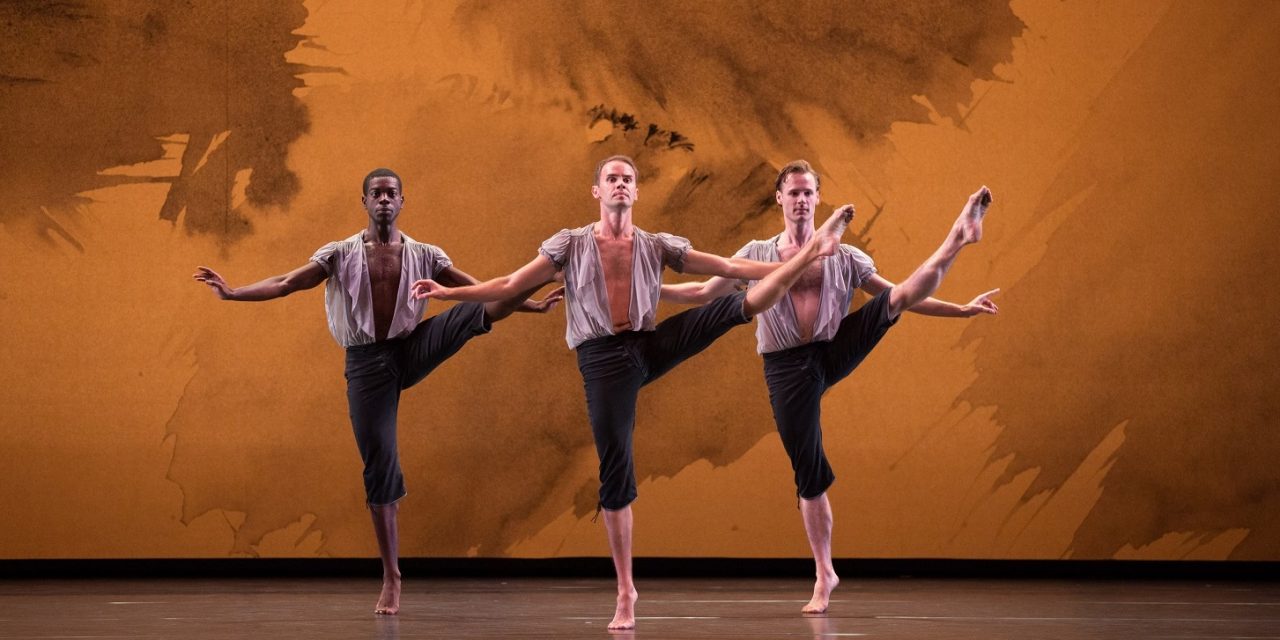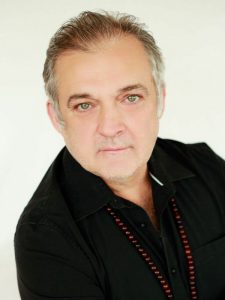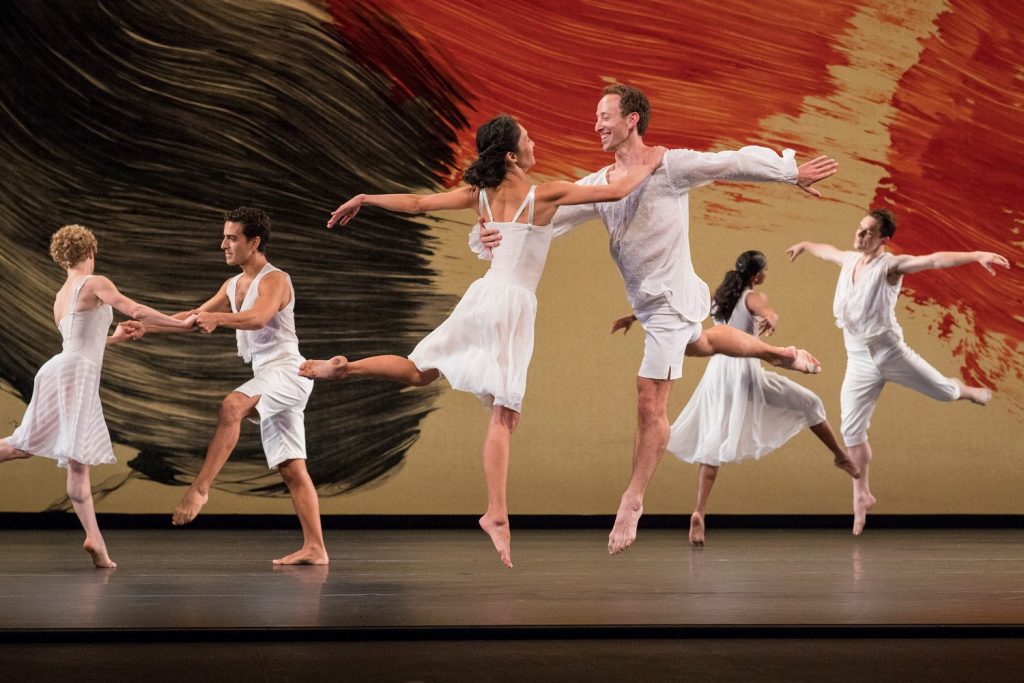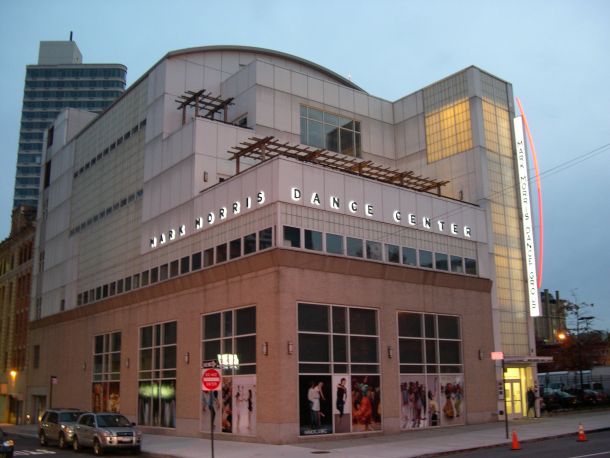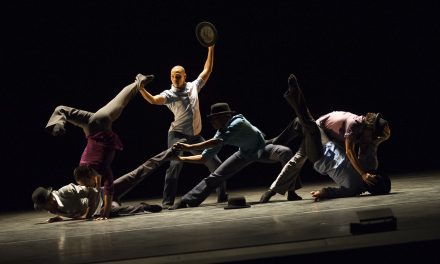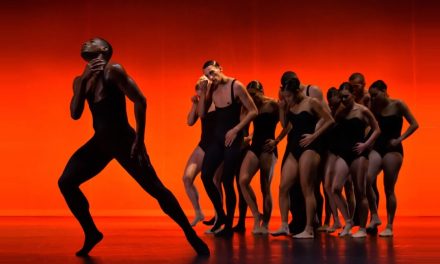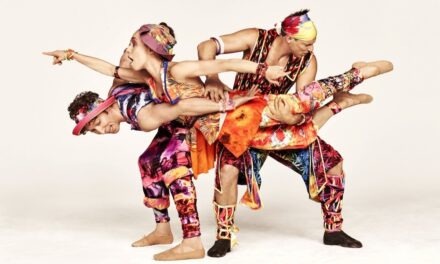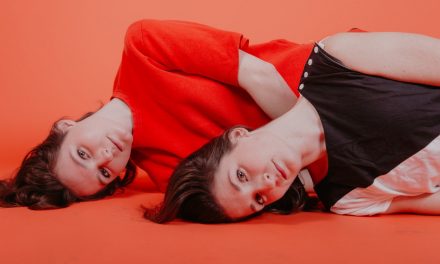For more than two years, audiences have been denied the opportunity to experience the energy and excitement of attending live dance, music and theater performances. Thankfully, via strict health guidelines, venues have finally opened their doors. On June 9 – 12, 2022, Los Angeles audiences will have the opportunity to experience the incredible New York based Mark Morris Dance Group (MMDG) & Music Ensemble at The Broad Stage in Santa Monica featuring the Los Angeles debut of Mozart Dances, created by Artistic Director and Choreographer Mark Morris. The program at The Broad Stage features a world premiere chamber arrangement of Piano Concerto No. 27 in B-flat major, K. 595 (1791) by Music Director Colin Fowler, along with Piano Concerto No. 11 in F major, and Sonata in D major for Two Pianos, all performed live on The Broad Stage’s mainstage. Tickets are on sale now.
Born in Seattle, Washington, Morris performed with the companies of Lar Lubovitch, Laura Dean, Eliot Feld, and the Koleda Balkan Dance Ensemble before forming MMDG in 1980. To date, he has now created over 150 works for MMDG as well as directed and choreographed productions for The Metropolitan Opera, New York City Opera, English National Opera, and The Royal Opera, Covent Garden, among others.
“The first piece I did was the Vivaldi Gloria which I choreographed in 1981,” he said. “When that came back for our 25th anniversary, it was suggested to me that I conduct it just to stay interested because I’ve now seen it a million times. So I did, and now I conduct several pieces in the repertory.” Morris has his own music ensemble, music director, and works with several different conductors. “I’m not trying to do that (conduct) instead of what I do. It’s not a hobby, but no one is in danger of losing their job,” he mused.
We shifted the subject of conducting to the post rehearsal period. “You’ve already completed the rehearsing, the notes and all the encouragement but you’re not performing. You’re promoting them (the musicians) performing, Morris said. “First of all you’re facing the wrong direction so you can’t do much,” he continued, causing us both to chuckle. Morris created the dance that he is conducting, so he has a relationship to it that no one else shares. He knows the dancers and some of the roles he has performed himself. “Everything I do is based on music. It (conducting) is almost the opposite of performing,” he said. “It’s sympathy. It’s through your face and your gesture, and everything that you’ve worked out between you and the performers; the people in the pit and the people on the stage. It’s thrilling and a little nervous making, but it is something that I do well enough that it isn’t a disaster.”
I asked if he received any feedback from the dancers after he has conducted a performance. His answer was what one would expect, the tempos were too fast or too slow. He answered yes, but added, “As long as we start and finish at the same time, then it has been a successful show.”
From 1988 to 1991, Morris was Director of Dance at the Théâtre Royal de la Monnaie in Brussels, the national opera house of Belgium. During that same time period, in 1990 he co-founded the White Oak Dance Project with ballet icon Mikhail Baryshnikov.
“Brussels was very, very difficult and extremely important,” Morris said. His company was there for three and a half years with a large budget and unlimited access to theater spaces. “I went there specifically because I had all the musical forces that I wanted because I only work with live, living musicians and live music.”
For the first two seasons of the White Oak Project the repertoire was completely created by Morris with about fifty percent of the dancers members of MMDG. When Morris left, White Oak became a repertory company, continuing to exist for another eight years. Referring to Baryshnikov, Morris said, “We’re still very close friends after many, many years, and we’ve worked together on other projects since then.”
The conversation turned to Mozart Dances which will be performed at The Broad Stage. Morris said that it was originally commissioned by Lincoln Center for the Performing Arts and the New Crowned Hope Festival in Vienna, led that year by American director Peter Sellers, best known for his unique staging of plays and operas. Morris, however, was the only artist who actually created a work to Mozart’s music. “In that way it was a tribute to Mozart in that other composers, choreographers and visual artists created in response to Mozart’s last year of work.” He stated that artists created works based on the same basic stories as Mozart’s The Magic Flute, The Requiem, and his finally symphonies. Morris chose Piano Concerto No. 27 because it was the last concerto that Mozart wrote before he died.
Throughout the years Mozart Dances has been performed in many different venues, on Great Performances at Lincoln Center, and featuring many different pianists and conductors. For The Broad Stage, MMDG is presenting a reduced orchestration that fits their stage. “It’s a beautiful theater, but it can’t really hold a full orchestra,” Morris explained, “and we don’t have the money or the touring capacity right now. During this phase of the COVID plague we are touring very little and very cautiously.” This performance will include 8 musicians and 16 dancers. “Mozart wrote some of this work for string quartets and piano as a reduction that he wrote himself. So, it is totally period conscience to do it with chamber orchestra.” Morris described it as a huge work with more music by Mozart than would normally be included for the average music recital.
The Scenic Design for Mozart Dances is by Howard Hodgkin, one of England’s most celebrated contemporary painters who passed away in 2017. He gave Morris several small drawings in paint to use them as he wanted. Morris chose three which were blown up and used as backdrops. The colors of the costumes for Mozart Dances were suggested by Hodgkin, but they were designed by American Costume Designer Martin Pakledinaz (1953-2012). The lighting was created by James F. Ingalls who has worked extensively on Broadway and in London.
“I always give my collaborators the music that I am working with first. They (the sets, costumes and lighting) come from everyone listening to the music and talking with each other and when I have some dancing for them to watch, I show that to them, which has some sort of effect and then we put it all together. They have free hand but I have final say.”
Near the end of the interview I ask Morris about the company’s amazing Dance Center in Brooklyn, NY which just celebrated its 20th anniversary and claims to have the best studios in New York. Like the majority of businesses around the world, it is just beginning to open up following the pandemic and continues to adhere to strict health protocols. In addition to its being the home for MMDG, the Dance Center offers classes for students of all ages and levels, a program for people with Parkinson’s Disease, and nine studios, some of which can be rented at very reasonable rates.
“It’s an amazing place,” Morris said proudly. “There is natural light, the best floors, best hygiene, best dressing rooms in town. It’s an amazingly great place.” All the classes have live music and continues to be a popular place to work for New York choreographers. The main studio where MMDG rehearses is 60 ft. by 60 ft; large enough for Morris to create and rehearse operas, and for MMDG to mark off space of any size theater stage. Although he said that it is awkward to do because of crew and costs, Morris said that this studio can be converted into a 150 seat theater.
Morris encouraged audience members to wear a mask, visit his company’s website (see the link below) and to then watch, listen and enjoy!
#####
WHAT: Mozart Dances
Premiere: Lincoln Center for the Performing Arts – Mostly Mozart, August 17, 2006
Choreography: Mark Morris
Music: Wolfgang Amadeus Mozart – Piano Concerto No. 11 in F Major, K. 413 (1782-82) – Allegro, Larghetto, Tempo di Menuetto; Sonata in D Major for Two Pianos, K. 448 (1781) – Allegro con spirito, Andante, Allegro molto; Piano Concerto No. 27 in B-flat major, K. 595 (1791)
WHEN:
Thursday, June 9 at 7:30pm
Friday, June 10 at 7:30pm
Saturday, June 11 at 7:30pm
Sunday, June 12 at 2:00pm
WHERE:
The Broad Stage – Main Stage
1310 11th St. Santa Monica CA 90401. Parking is free
TICKETS:
Prices Start at $60 (Prices subject to change)
Online click HERE.
Phone Box Office at 310.434.3200
In Person Box office at 1310 11th St. Santa Monica CA 90401 beginning two hours prior to performance.
#####
To learn more about the Mark Morris Dance Group & Music Ensemble, please visit their WEBSITE.
To see what else The Broad Stage performance season is offering, please visit their WEBSITE
Written by Jeff Slayton for LA Dance Chronicle.
Featured image: Mark Morris Dance Group in Mozart Dances choreography by Mark Morris – Photo by Rosalie O’Connor
Please follow us on Facebook, and on Instagram and on LinkedIn and on Twitter.
Please consider donating to LA Dance Chronicle HERE.

